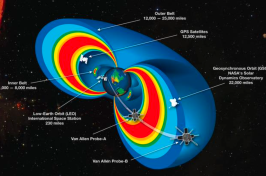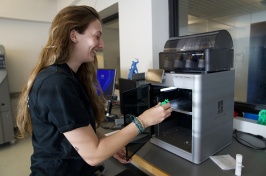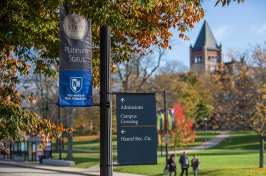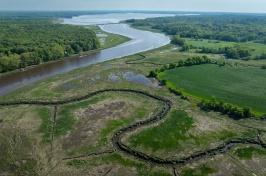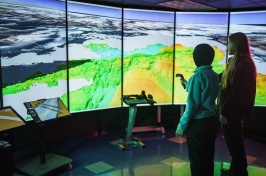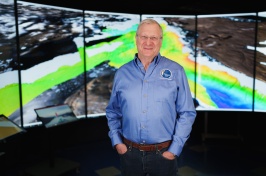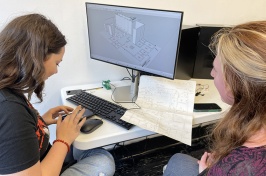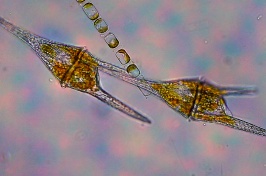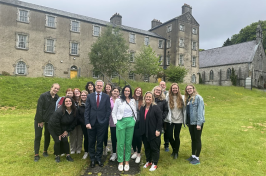The University of New Hampshire inspires innovation and transforms lives in our state, nation and world. More than 16,000 students from all 50 states and 71 countries engage with an award-winning faculty in top-ranked programs in business, engineering, law, health and human services, liberal arts and the sciences across more than 200 programs of study. A Carnegie Classification R1 institution, UNH partners with NASA, NOAA, NSF and NIH, and received $260 million in competitive external funding in FY21 to further explore and define the frontiers of land, sea and space.
UNH Technology Helps Map the Way to Solve Mystery of Pilot Amelia Earhart
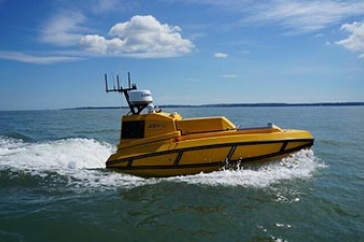
UNH’s autonomous surface vehicle known as BEN (Bathymetric Explorer and Navigator), will help map the ocean floor to help researchers locate Amelia Earhart’s missing plane. Photo credit: UNH
DURHAM, N.H.— Researchers from the University of New Hampshire’s Marine School are part of the crew, led by National Geographic Explorer-at-Large Robert Ballard, that is setting out to hopefully find answers to questions around the disappearance of famed pilot Amelia Earhart. UNH’s Center for Coastal and Ocean Mapping has developed an autonomous surface vehicle (ASV), or robot, that can explore the seafloor in waters that may be too deep for divers.
The UNH robot known as BEN, the Bathymetric Explorer and Navigator, provides Ballard and the crew aboard the EV Nautilus with a unique capability to map the seafloor in the shallow areas adjacent to the island where Earhart sent her last radio transmission. This area is too deep for divers and too shallow for safe navigation of the Nautilus to use its deep-water sonar systems. Maps of the ocean floor produced by BEN will be used by the Nautilus crew to target dives with remotely operated vehicles (ROV) in the search for remnants of the plane.
Evidence suggests Amelia Earhart made a successful landing, likely near the coral reef around the island of Nikumaroro, in the western Pacific Ocean, and was able to transmit radio signals afterward. However, no plane was seen by Navy pilots surveying the islands several days after her disappearance suggesting that the plane may have been pushed off the reef into deeper water.
BEN is equipped with state-of-the-art seafloor mapping systems including a Kongsberg EM2040P multibeam echo-sounder and Applanix POS/MV navigation system, which allow it to make 3D topographic and acoustic backscatter maps of the seafloor. The Center has developed mission planning and “back-seat-driver" control software designed specifically for piloting BEN for the seafloor mapping mission. BEN was manufactured by ASV Global, in a design collaboration with the Center.
The UNH crew consists of research engineers Val Schmidt, lead of this operation, KG Fairbarn, and Andy McLeod, who are all aboard the EV Nautilus as well as Roland Arsenault, who is supporting the crew from shore. All are a part of the UNH Marine School’s Center for Coastal and Ocean Mapping development and use of robotics for marine science and seafloor mapping.
The expedition, which is being covered on nationalgeographic.com, will be featured in a two-hour special titled EXPEDITION AMELIA that will premiere October 20, on National Geographic.
Latest News
-
February 19, 2025
-
February 6, 2025
-
February 5, 2025
-
January 15, 2025
-
January 6, 2025










